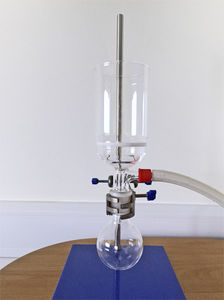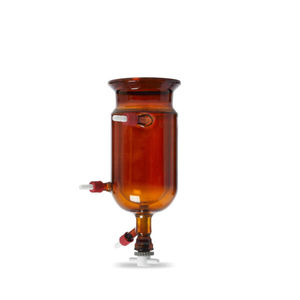
- Company
- Products
- Catalogs
- News & Trends
- Exhibitions
Multi-channel manifold glassgasvacuum




Add to favorites
Compare this product
Characteristics
- Number of channels
- multi-channel
- Material
- glass
- Applications
- gas, vacuum
Description
Schlenk lines (also known as vacuum gas manifolds) are a commonly used piece of chemistry apparatus originally developed by Wilhelm Schlenk.
Schlenk lines basically consists of a dual manifold with several ports. One manifold is connected to a source of purified inert gas, while the other is connected to a high-vacuum pump. The inert gas line is vented through an oil bubbler, while solvent vapours and gaseous reaction products are prevented from contaminating the vacuum pump through a liquid nitrogen or dry ice/acetone cold trap. Special stopcocks or Teflon taps allow for vacuum or inert gas to be selected without the need for placing the sample on a separate line.
Schlenk lines are useful for safely and successfully manipulating air sensitive compounds. The high vacuum is also often used to remove the last traces of solvent from a sample. Vacuum gas manifolds often have many ports and lines, and with care it is possible for several reactions or operations to be run simultaneously.
We offer a range of standardised configurations however all our Schlenk lines are bespoke and manufactured precisely to suit your chemistry by our experienced expert scientific glass blowers. Talk to our chemists today to discuss your requirements.
• Made to order to meet your specifications.
• Choose either screw in style PTFE valves or glass stopcocks
• Choose between 3, 4, or 5 ports
• Main tubes are 24mm OD, with connectors available to suit, typically B19/B24.
Catalogs
No catalogs are available for this product.
See all of Asynt‘s catalogsRelated Searches
*Prices are pre-tax. They exclude delivery charges and customs duties and do not include additional charges for installation or activation options. Prices are indicative only and may vary by country, with changes to the cost of raw materials and exchange rates.





